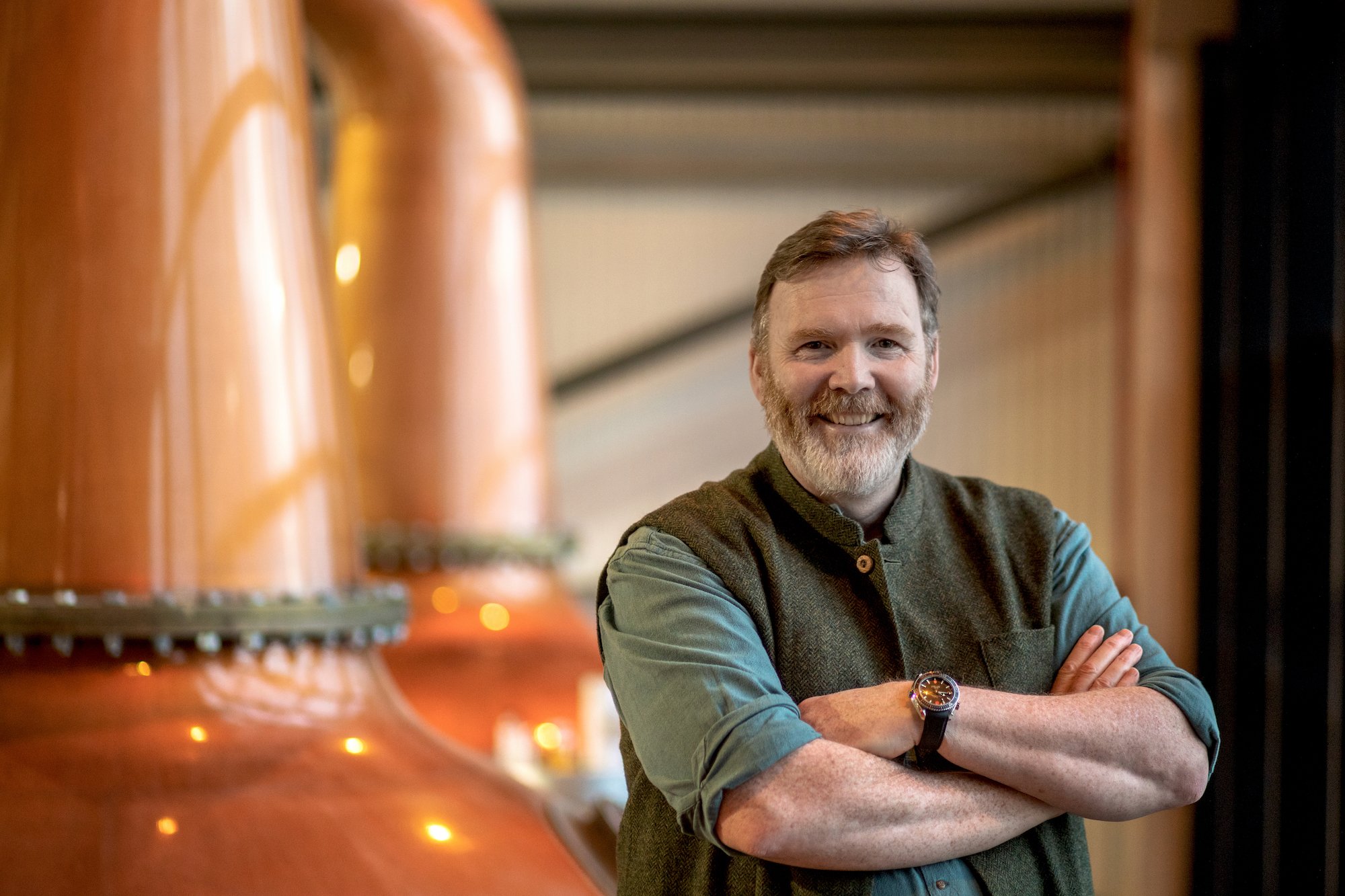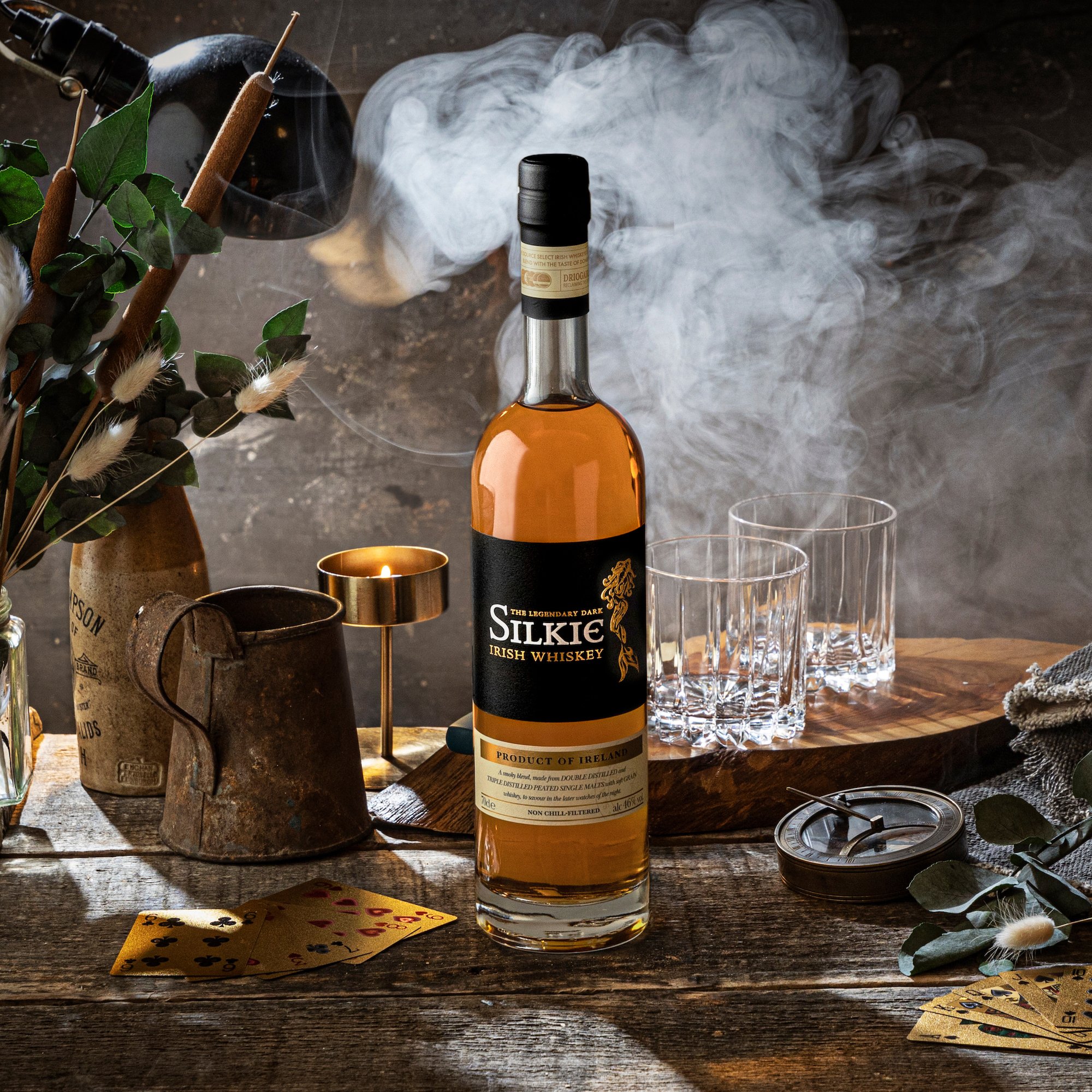How James Doherty of Silkie Irish Whiskey is Bringing Back Flavor
James Doherty of Silkie Irish Whiskey
Irish Whiskey has had a monolithic flavor profile over the last few decades, but it wasn’t always the anti-Scotch. Before industrialization in the early part of the 20th century and slumping sales globally for whisk(e)y starting in the 1960s, styles of Irish whiskey produced on the island were widely varied. Now James Doherty is working to bring back the lost styles of Irish Whiskey to an area where the last legitimate distillery went out of business in the late 1800s.
Irish Whiskey
“Irish whiskey today is a version of whisky that is lighter, sweeter, smoother, maybe easier than most people would perceive Scotch whisky to be, which is the kind of I suppose the world leading idea of where whisky is,” says James Doherty, co-Founder and managing director of Sliabh Liag Distillers. “Irish whiskey and all whiskeys are made with a similar process, although Irish whiskey is triple-distilled, which gives you this kind of lighter, softer, softer sort of more elegant approach to it. The taste of it today is a reflection of a post-1960 reaction to an industry that was under some pressure at that time. It had lost its way a little bit. And was trying to find its way back and it did it by defining itself in this kind of easier approachability.”
But what the modern whiskey drinker today thinks of as Irish Whiskey is only one style of Irish Whiskey in the broader historical context.
Looking Back at Irish Whiskey
Bushmills photo credit Mitch Hodge
“Historically, if you look at Irish Whiskey, it was heavier, richer, sweeter, more challenging, but those styles over a century got lost in the move from rural distilling into distilling in towns and cities,” explains Doherty. “The big juggernaut companies are Powers and Jameson and Bushmills, they all centered around this one style that was generically Irish. We are coming at it from the angle of, let’s bring back the styles that would have been true of the rural parts of the island, which were heavier, smokier, and in our case, particularly, there would have been peat smoke here.”
Irish Single Malt and Irish Pot Still whiskeys are today the best-known styles of Irish Whiskey, but all kinds of grains have been used historically to make Irish Whiskeys.
“Irish single malt would be 100% malted barley, but actually grain whisky could be multiple grains and is made with maize, which gives it its kind of almost buttered popcorn sweetness,” Doherty says. “But there is a style of Irish whiskey which is called pot still, and probably the most famous brand within that would be Red Breast, which dominates the Jameson brand. It is Pot Still, and that is made with multiple grains. In the early 1800s, Irish distillers, both rural and major ones, had worked out that using unmalted barley gave you spicier, nuttier tastes. And so this version of Irish whiskey, which is less well-known today, called pot still, which uses multiple grains and has a kind of nuttier, oilier style to it is probably the one that is synonymous with Ireland. Because the world thinks that single malt is kind of the premium style in the world today.”
Looking Forward
Doherty serves as the Chairman of the Irish Whiskey Association, which endeavors to create a more sustainable future for beverage producers in Ireland. As part of that mission, Doherty is reviving a lost distilling heritage and inviting new distillery tourism to a place that, until recently, had none.
Silkie Irish Whiskey products
The Silkies Products
“The Silkies are blends that I source at the moment, so the two core versions are 70-30 single malt, single malt is 30%, 70% is grain whisky,” Doherty explains. “One of the variants is actually a 100% single malt. In my own distillery, which is not of age yet, we make peated single malt, which is heavily heavily smoky. We’re the only distillery on the island where we leave the grain in all the way through the process. We create a single malt that’s smoky and rich and challenging. We make a pot still, which uses multiple grains, and we use 50% peated single malt, 30% raw barley, and 20% malted oats. And the oats piece is important because Donegal would have been synonymous with oats originally. Unmalted barley gives you this nutty, spicy taste. The oats give you this incredibly creamy, almost like caramelized granny smith sweetness.”
Peated Oats
Silkie Irish Whiskey Legendary Dark
Peated oats aren’t a typical distilling staple, and in fact Doherty only knows of two other, smaller, distilleries peating oats for Irish Whiskey. Along with returning distilling to Donegal, Doherty is also excited about the return of specialty malting to the area — the maltster who is currently malting for Sliabh Liag is selling to a friend of Doherty’s in the area who operates a farm, further adding to the unique landscape Doherty is forging within the identity of Irish Whiskey.
The Heritage of Illicit Distillers
“Donegal is an interesting place in that it’s geographically in the North but politically in the Republic and kind of ignored by both sets of governments,” says Doherty. “It’s developed a culture that’s a place apart in many ways. From a distilling perspective, it has very little legitimate distilling presence. In 1841 the last distillery closed here, and it closed because it couldn’t compete either on cost with the bigger guys that were growing in Derry, and it couldn’t compete with the local guys who were what people wanted to drink. It didn’t have a home market and it didn’t have an international market so it fell apart. What we’ve done is rather than try and find that play with that legitimate heritage, we’ve gone to the illicit heritage. Both my grandfathers were illicit distillers. And they would have had no coal to dry the barley with, so it would all have been peated originally. We’ve been true to our sense of who we are by being true to their legacy. For us, there’s no point in us trying to be generically Irish. We want to be distinctly Donegal. And for that to be true, all the whiskeys had to be peated. That’s our singular focus. The other thing is that we distill on the grain, so we’ve taken what would have been an illicit style of process and modernized that.”
The history of peating grains
Peating grains was less a stylistic choice, historically, and more of a use-what-you-have proposition.
“Everybody would have used peat because that was the primary fuel source for heat,” Doherty explains. “If you needed heat and warmth to dry the barley, then that’s what you would have been using. The move from rural distilling into the towns is one that allowed taxes to be collected, which is why the government encouraged it. But once we moved it into towns, you also then also had access to railways and canals, which meant you could bring coal in as a primary fuel source. That starts to lead you away from that rural style to something which is less smoky. If you think about Irish Whiskey defining itself post the Second World War as not Scotch, then it drives the philosophy that is not smoky. You deliberately look for something that’s about as far from that as you can be, which, as a survival strategy probably is very successful.”
But bringing back the old ways of distilling that have been lost to the decades is part of being a good neighbor and a steward of the resources in his family’s homeplace of Donegal.
The Visitor Experience
“When people say visitor center or a visitor experience, I’m always a little bit wary that we’re not one of those kind of full-blown lots of audiovisual and that kind of thing,” Doherty says. “People get a personalized tour around the distillery, get to see and touch everything, and then a guided tasting at the end, which takes you through our gins, which are super savory, and then we do a whiskey tasting, which takes you on this journey of Silkie. We don’t even offer you a coffee. The village we live in has five pubs, three cafes, two hotels, and three churches. so that covers every kind of social need. We try not to compete with the village. We think of our role as complementing the tourism of the village by keeping people for an hour or so. They’ve done an hour with us and then they do an hour with the weavers, there’s a lot of hand weaving in our village, or they’ve been to the craft makers who make all these beautiful little glass works and things like that. Then they need seating and they need beds and they need coffees and the village is supremely well sorted to deal with that. So ours is a tour of a working distillery and a tasting and a gift shop and then we encourage people back into the village for the hospitality element of it.”
Silkie Irish Whiskey distillery photo credit Ardara Photography
A Return to Roots
For Doherty, bringing distilling to Donegal is a labor of love.
“Our real reason for being here is that my mom and dad were forced to leave here in the 1960s to look for work in England and that’s where I grew up,” says Doherty. “We believe that this distillery business is a wonderful business because they have a sense of place which means you can’t really move them. But if they’re successful and we’ve got a way to go yet, then they create employment and opportunities for hundreds of years, and that’s really why we’re here. If we can build that kind of opportunity based on a sense of place, hopefully that’s a pass to creative opportunity for a long, long time for people.”
Learn more about Sliabh Liag Distillers and the Adara Distillery at sliabhliagdistillers.com and learn more about Silkie Irish Whiskey at silkiewhiskey.com.





